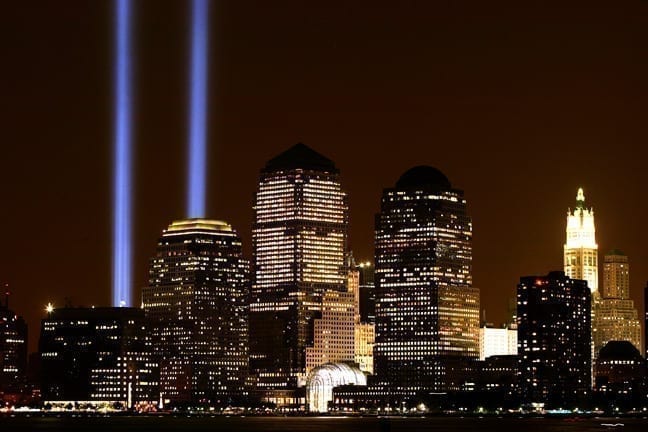Ten years after the September 11 attacks, Richie Pecorella remembers that Karen Juday was “the one.” She made the “macho Italian guy from Brooklyn” feel fifteen again and helped him be a better person. They were engaged when he watched the trade centers, where she worked on the 101st floor, burn from his office window. He remembers throwing his office chair at the window, his hands trembling uncontrollably. While he still misses her deeply, he is committed to honoring her life. Looking upward, he promises her, “I will do enough good to make it up there.”Richie’s story appears in a short animation narrated with his thick Brooklyn accent and punctuated by moments of touching humor and grief. The animation is part of an ongoing StoryCorps oral history project to record a story about each life lost in the trade center attacks.Richie’s narrative, though sad, is noticeably colored by hope. Far from being an exception, his strength is in fact the norm—a powerful testament to the resilience of the human spirit.The terrorist attacks on September 11 were what psychologists call, in clinical terms, a potentially traumatic event, meaning a life-threatening event that is more likely to evoke traumatic responses like panic attacks or intrusive flashbacks. Anticipating widespread trauma, city officials gathered unprecedented numbers of grief counselors and psychologists to help survivors and city residents cope. The services went almost entirely unutilized—there simply was no need.The more common story was one of extraordinary resilience.MORE: Journal Through a Trauma“People may have jumped the gun by assuming that there were going to be extensive, long-term psychiatric casualties,” says Philip Saigh, Ph.D., professor of psychology at Columbia University Teachers College and a leading trauma researcher. “History has typically shown that doesn’t happen. People are much more resilient than one would expect.”Indeed, a large-scale survey of Manhattan residents showed that, six weeks after the attacks, a very small percentage were experiencing severe trauma symptoms. That number declined rapidly until it was almost nonexistent six months later.A 2006 study by trauma researcher George Bonanno at Columbia University Teachers College supports those results, showing that most New York City residents had no trauma symptoms at any point in the first six months after the attack. Even among those who experienced the attack first-hand, the majority showed no significant symptoms of trauma.That doesn’t mean they simply suppressed the trauma. According to Saigh, resilient trauma survivors can tell you what happened and remember the event—painfully even—but they don’t have symptoms like recurrent thoughts or nightmares, excessive irritability, or panic attacks, which can indicate post-traumatic stress disorder (PTSD), a severe trauma reaction most commonly seen in rape victims and soldiers returning from war.COLUMN: Hope, Gratitude & Love, from Happiness Expert Matthew D. Della PortaStill, traumas do take a toll. Those who lost loved ones were more likely to suffer from depression in the weeks after the attacks and those who experienced the attacks directly were more likely to suffer from PTSD.Researchers saw the most intense reaction in those who both lost a loved one and witnessed the attacks first-hand, and about a third did develop PTSD. But even in those cases, strength and hope often prevailed.“Time is a great healer,” says Saigh. “The overriding majority of people will naturally be upset following a traumatic event, but they tend to recover fully.” In fact, his research has shown that the majority of people who have been exposed to a traumatic event at some point in their lives, including 9/11, don’t differ at all from people who were never traumatized. “Most people think that after a traumatic event, people will be marked for life,” he says. “The reality is that most will be just fine.”Indeed, many have even flourished in the face of extreme adversity.Lauren Manning, a 9/11 survivor who lost many of her friends and colleagues that morning, was just entering the twin towers when the first plane hit. Flames rushed down the elevator shaft into the lobby, engulfing her in flames that burned more than 80 percent of her body.In her new book, “Unmeasured Strength,” Lauren tells the story of her improbable recovery. An excerpt from the early pages captures the extraordinary resilience and strength that we commemorate and honor ten years later: “In the weeks and months that followed [the attacks], I battled back from the edge of death to hold my child in my arms and intertwine my husband’s fingers with what was left of my own. In almost every way, this is the story of a miracle.”QUIZ: Close Relationships Quiz
© YouBeauty 2024




































